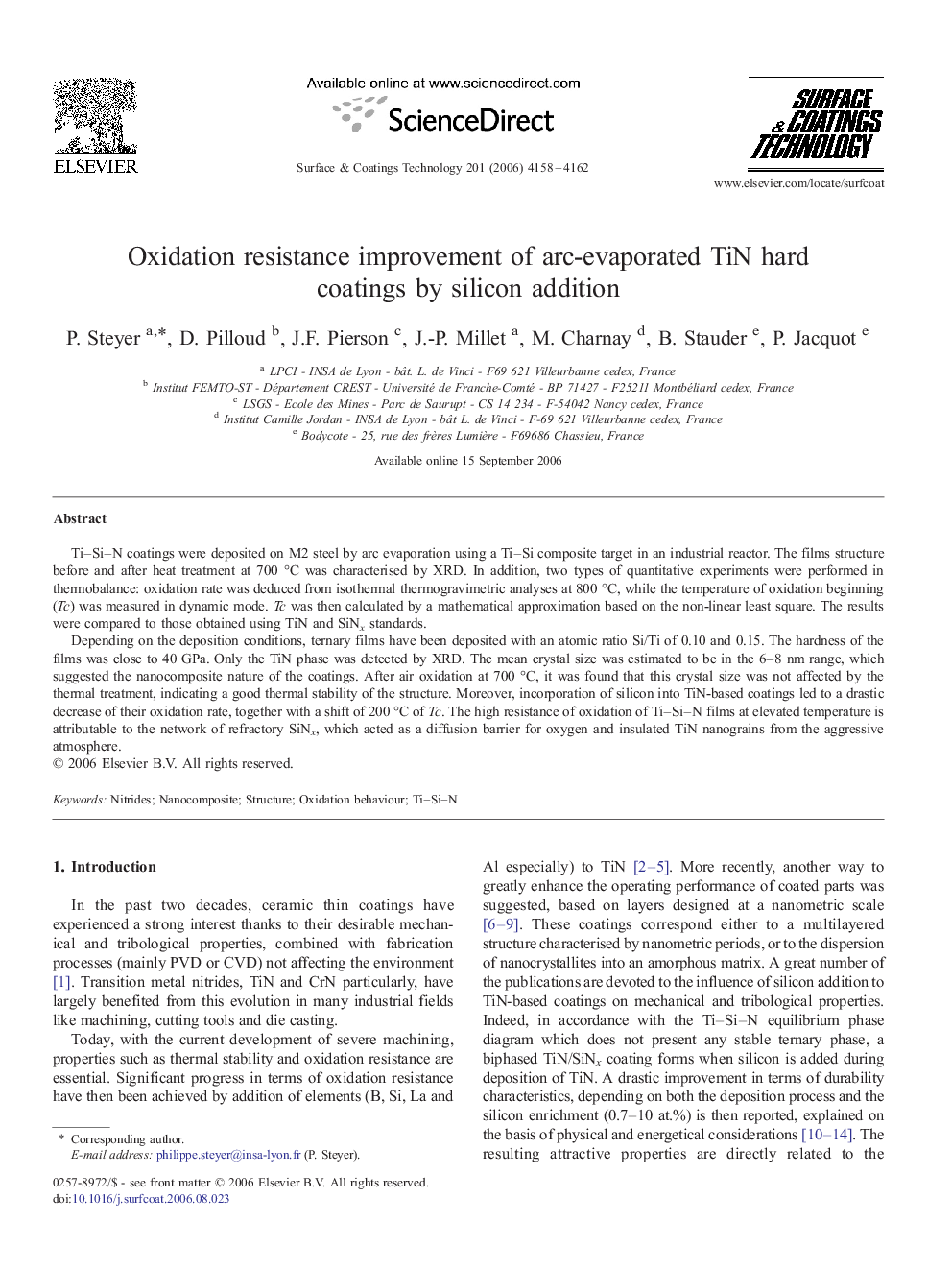| Article ID | Journal | Published Year | Pages | File Type |
|---|---|---|---|---|
| 1663227 | Surface and Coatings Technology | 2006 | 5 Pages |
Ti–Si–N coatings were deposited on M2 steel by arc evaporation using a Ti–Si composite target in an industrial reactor. The films structure before and after heat treatment at 700 °C was characterised by XRD. In addition, two types of quantitative experiments were performed in thermobalance: oxidation rate was deduced from isothermal thermogravimetric analyses at 800 °C, while the temperature of oxidation beginning (Tc) was measured in dynamic mode. Tc was then calculated by a mathematical approximation based on the non-linear least square. The results were compared to those obtained using TiN and SiNx standards.Depending on the deposition conditions, ternary films have been deposited with an atomic ratio Si/Ti of 0.10 and 0.15. The hardness of the films was close to 40 GPa. Only the TiN phase was detected by XRD. The mean crystal size was estimated to be in the 6–8 nm range, which suggested the nanocomposite nature of the coatings. After air oxidation at 700 °C, it was found that this crystal size was not affected by the thermal treatment, indicating a good thermal stability of the structure. Moreover, incorporation of silicon into TiN-based coatings led to a drastic decrease of their oxidation rate, together with a shift of 200 °C of Tc. The high resistance of oxidation of Ti–Si–N films at elevated temperature is attributable to the network of refractory SiNx, which acted as a diffusion barrier for oxygen and insulated TiN nanograins from the aggressive atmosphere.
